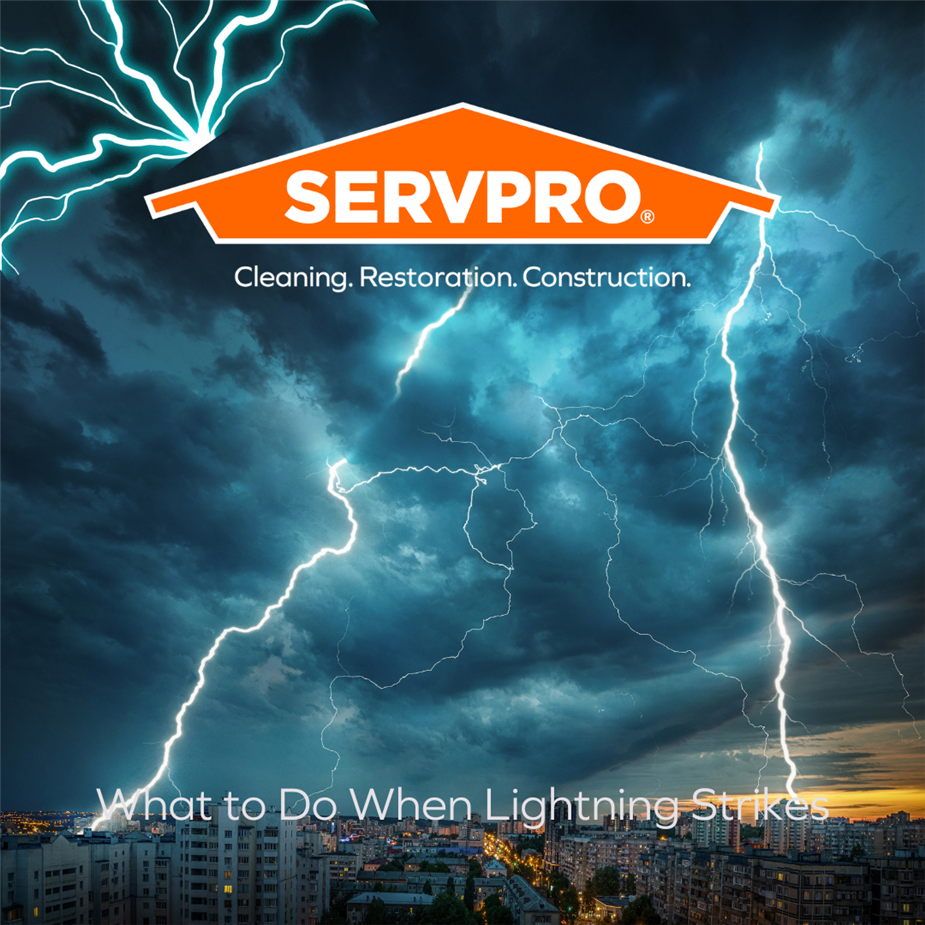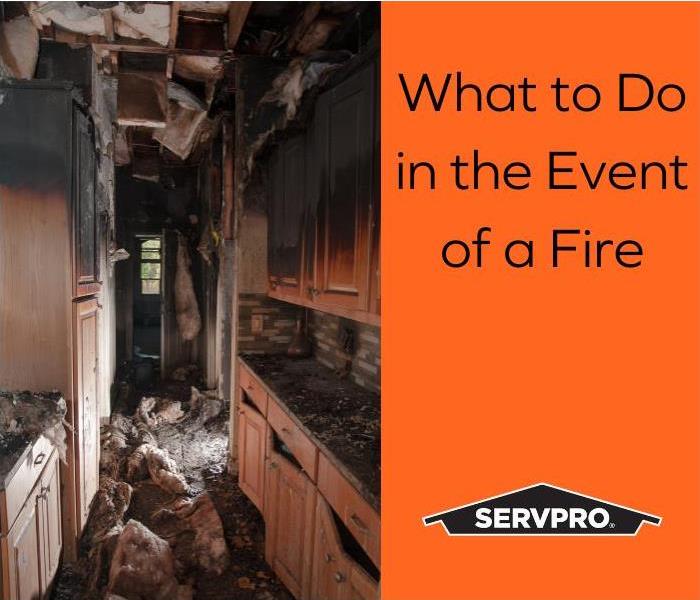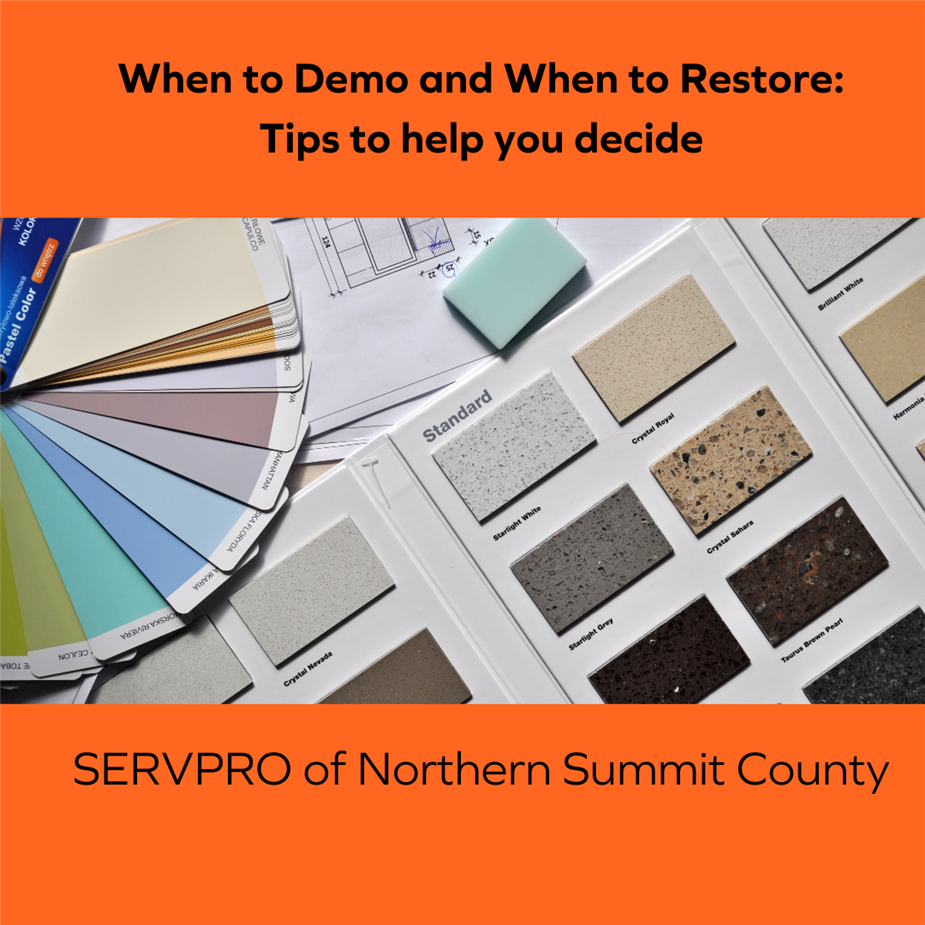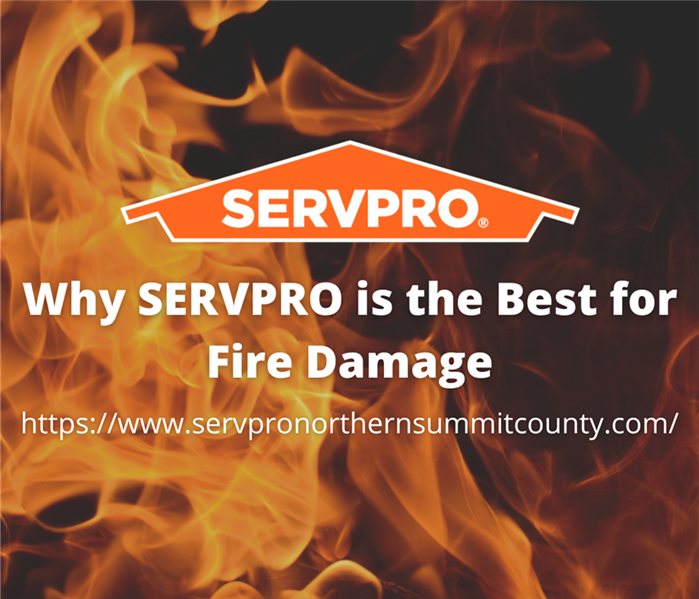Recent Posts
The Hidden Dangers of Glass Cooktop Stoves
8/8/2024 (Permalink)
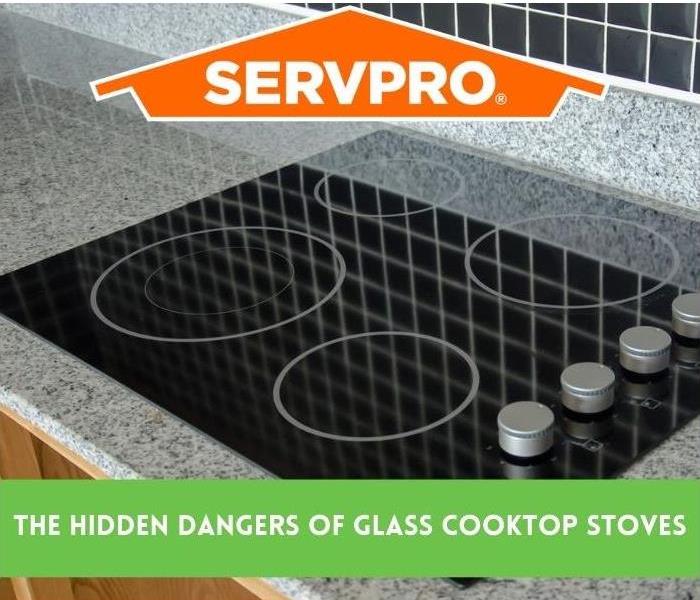 Glass cooktops come with a set of unique risks that every user should be aware of.
Glass cooktops come with a set of unique risks that every user should be aware of.
Glass cooktop stoves have become a popular choice in modern kitchens due to their sleek design and easy-to-clean surfaces. However, while they offer aesthetic appeal and convenience, these stoves come with a set of unique risks that every user should be aware of. In this blog, we'll explore the potential dangers associated with glass cooktop stoves and provide tips on how to minimize these risks to ensure a safe cooking experience.
1) Fragility and Cracking
One of the most significant concerns with glass cooktop stoves is their susceptibility to cracking. Although the glass used is typically tempered and durable, it can still crack or shatter under certain conditions. Sudden temperature changes, dropping heavy objects, or even placing a hot pot directly from the oven onto a cold cooktop can cause the glass to crack. A cracked cooktop not only becomes unusable but also poses a risk of injury from sharp edges.
Tip: To prevent cracks, always use cookware with smooth, flat bottoms and avoid dragging them across the surface. Be mindful of sudden temperature changes, and use caution when handling heavy or hot objects near the cooktop.
2) Heat Retention and Burns
Glass cooktops can retain heat long after the burners have been turned off, creating a risk of burns if someone accidentally touches the surface. Unlike traditional stoves, glass cooktops may not visibly indicate that they are still hot, making it easy for unsuspecting users to get burned.
Tip: Many glass cooktops come with a residual heat indicator light that stays on until the surface cools down. Always check this light before touching the cooktop, and consider using stove guards or barriers to keep children and pets away from the hot surface.
3) Scratches and Damage
While glass cooktops are known for their smooth, easy-to-clean surfaces, they are also prone to scratching. Scratches can occur from using abrasive cleaning tools, sliding rough cookware, or accidentally dropping utensils. These scratches not only mar the appearance of the cooktop but can also harbor food particles and bacteria, making cleaning more challenging.
Tip: Use non-abrasive cleaners and soft cloths to clean the cooktop. Avoid using cast iron or stone cookware with rough bottoms, as these can scratch the surface. Instead, opt for stainless steel or aluminum pots and pans with smooth, flat bottoms.
4) Electrical Hazards
Glass cooktops are often paired with electric heating elements. If the glass surface becomes damaged, it can expose electrical components underneath, posing a risk of electrical shock. Additionally, if liquids spill over and seep into the electrical components, it can cause short circuits or even fires.
Tip: Immediately address any cracks or damage to the glass surface. Clean up spills promptly and ensure that liquids do not overflow onto the cooktop. If you suspect any electrical issues, turn off the power and consult a professional for repairs.
5) Limited Cookware Compatibility
Not all cookware is suitable for use on glass cooktops. Some materials, such as copper or aluminum, can leave residue that is difficult to clean. Moreover, cookware with warped bottoms can lead to uneven heating, potentially damaging the cooktop or causing cooking mishaps.
Tip: Invest in cookware that is specifically designed for glass cooktops.
Glass cooktop stoves offer a modern, elegant addition to any kitchen, but they require careful handling and maintenance to ensure safety. By being aware of the potential dangers and following the tips provided, you can enjoy the benefits of your glass cooktop while minimizing the risks. Remember, safety in the kitchen is paramount, and a little caution goes a long way in preventing accidents and injuries.
Don't wait until a minor mishap turns into a major disaster. At SERVPRO of Northern Summit County, we’ve helped countless homeowners like you recover from unexpected damage, including fires caused by glass top ranges. Our team is trained, equipped, and ready to respond 24/7 to protect what matters most to you. 330-650-4486
Heavy Rains: How to protect your home for water damage
8/2/2024 (Permalink)
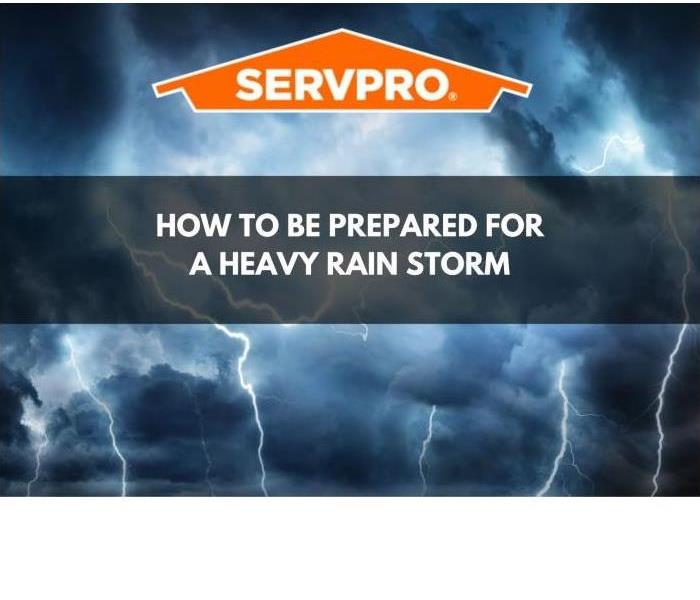 Protect Your Home from Water Damage
Protect Your Home from Water Damage
As we move into seasons marked by heavy rains, homeowners must be vigilant about protecting their properties from potential water damage. Prolonged and intense rainfall can lead to flooding, leaks, and structural issues that can be costly and time-consuming to repair. However, with a few proactive steps, you can safeguard your home and minimize the risk of water damage. Here’s how:
1. Inspect and Maintain Gutters and Downspouts
Your gutters and downspouts are your first line of defense against water damage. They help channel rainwater away from your home's foundation. Ensure that they are free from debris like leaves and twigs, which can cause blockages. Regularly check for any signs of rust, cracks, or disconnections. Extend downspouts at least 4 to 6 feet away from the foundation to prevent water from pooling near your home.
2. Seal Windows, Doors, and Cracks
Windows and doors are common entry points for water during heavy rains. Check the seals around them and reapply caulking if needed. Also, inspect the exterior of your home for any cracks or gaps in the walls or foundation. Sealing these with appropriate materials will prevent water from seeping in and causing damage.
3. Landscaping Considerations
The landscaping around your home plays a significant role in water management. Ensure that the ground slopes away from your house, allowing water to flow away from the foundation. Avoid planting shrubs and trees too close to your home, as their roots can interfere with drainage systems and even damage the foundation.
4. Check to verify your Sump Pump is functioning correctly
For homes with basements, a sump pump is an essential investment. This device helps remove water that accumulates in the basement, preventing flooding and water damage. Make sure your sump pump is in good working condition and consider installing a battery backup system in case of power outages during storms.
5. Backflow Prevention
Heavy rains can overwhelm municipal sewer systems, leading to sewage backups in homes. To prevent this, consider installing a backflow valve in your sewer line. This device allows sewage to flow out of your home but prevents it from flowing back in.
6. Insurance Coverage
Finally, review your homeowner’s insurance policy to ensure you have adequate coverage for water damage. Standard policies often do not cover flooding, so you may need to purchase additional flood insurance, especially if you live in a flood-prone area.
Heavy rains can pose a significant threat to your home, but with careful preparation and regular maintenance, you can minimize the risks. Taking these proactive steps not only protects your property but also provides peace of mind during stormy weather. Remember, the key to protecting your home from water damage is vigilance and timely action. Stay safe and dry!
If you're experiencing water intrusion or flooding in your property, don't wait for the damage to worsen. Call SERVPRO of Northern Summit County 330-650-4486 immediately for professional assistance. Our team is ready to help you protect your home and restore peace of mind. Contact us today for a prompt response and expert service 24/7/365.
The Importance of a Simple Emergency Plan for Commercial Companies
8/2/2024 (Permalink)
 In the fast-paced world of commercial businesses, unexpected emergencies can strike at any time.
Even the best trained staff needs a simple plan.
In the fast-paced world of commercial businesses, unexpected emergencies can strike at any time.
Even the best trained staff needs a simple plan.
In the fast-paced world of commercial businesses, unexpected emergencies can strike at any time. Whether it's a natural disaster, a fire, a medical emergency, or a security threat, being prepared is crucial. Even the most well-trained staff can find it challenging to think clearly and make quick decisions during chaotic situations. That's why having a simple, easy-to-follow emergency plan is essential. A straightforward plan can help offset the brain's ability to process information in high-stress scenarios and ensure the safety of employees, customers, and assets. Here's why planning ahead is beneficial for your business.
- Clarity in Chaos
Emergencies can overwhelm the senses and make it difficult to think clearly. A simple emergency plan provides clear, concise steps for everyone to follow, minimizing confusion and panic. When employees know exactly what to do, they can act quickly and efficiently, reducing the risk of injury and damage.
- Improved Response Time
In an emergency, every second counts. A well-defined plan can significantly improve response times by providing immediate guidance. Quick action can prevent minor issues from escalating into major crises, saving lives and reducing potential losses. For example, a clear evacuation plan can ensure everyone exits the building safely and promptly during a fire.
- Increased Safety for Employees and Customers
The safety of employees and customers is paramount. A simple emergency plan prioritizes their well-being by outlining evacuation routes, identifying safe zones, and designating roles and responsibilities. When everyone knows their part, they can act in an organized manner, helping to prevent injuries and ensuring a swift, safe response.
- Minimized Business Disruption
Emergencies can disrupt business operations, leading to lost revenue and productivity. By planning ahead, companies can minimize downtime and ensure a quicker return to normal operations. For instance, having a plan for data backup and recovery can protect critical business information and facilitate a smooth transition to temporary work arrangements if needed.
- Enhanced Communication
Clear communication is critical during an emergency. A simple plan establishes communication protocols, ensuring that everyone knows how to relay important information and receive updates. This includes designating a point of contact, establishing a communication chain, and utilizing multiple channels, such as email, phone, and text alerts, to reach all employees and stakeholders.
- Compliance and Liability Reduction
In many industries, having an emergency plan is not just a best practice; it's a regulatory requirement. Compliance with safety regulations protects your business from legal liabilities and potential fines. A well-documented plan demonstrates your commitment to safety and can be crucial in the event of an investigation or legal inquiry.
- Peace of Mind
Knowing that there is a plan in place can provide peace of mind to both management and staff. It fosters a sense of security and confidence, knowing that the company is prepared to handle emergencies effectively. This can improve morale and reduce anxiety, allowing employees to focus on their work without fear of the unknown.
Creating a Simple Emergency Plan
To create an effective emergency plan, follow these key steps:
- Identify Potential Risks: Assess the types of emergencies that could impact your business, such as natural disasters, fires, medical emergencies, or security threats.
- Develop Clear Procedures: Outline step-by-step procedures for each type of emergency, including evacuation routes, emergency contacts, and specific roles for employees.
- Train Your Staff: Regularly train employees on the emergency plan and conduct drills to reinforce the procedures. Ensure that everyone understands their responsibilities and knows how to respond.
- Communicate the Plan: Make the plan easily accessible to all employees and communicate it regularly. Use visual aids, such as maps and diagrams, to illustrate key information.
- Review and Update: Regularly review and update the plan to reflect changes in your business, new risks, or updates in regulations. Continuous improvement ensures that your plan remains effective and relevant.
SERVPRO's Emergency Ready Plan
For commercial properties, having a reliable and accessible emergency plan is vital. SERVPRO's Emergency Ready Plan provides an easy-to-use format that helps businesses prepare for the unexpected. This comprehensive tool allows you to outline critical information, including emergency contacts, facility details, and shut-off locations for utilities. By having all essential information in one place, you can ensure a swift and efficient response during an emergency, minimizing damage and disruption.
Conclusion
Emergencies are unpredictable, but a simple, well-prepared emergency plan can make all the difference. By providing clear guidance and training, businesses can protect their employees, customers, and assets, while minimizing disruption and ensuring a swift recovery. Planning ahead is not just a precaution—it's a critical component of responsible business management. Don't wait for an emergency to strike; start planning today with SERVPRO's Emergency Ready Plan and ensure the safety and resilience of your company. Contact our team for more information 330-650-4486
What to Do When Lightning Strikes
7/24/2023 (Permalink)
When lightning strikes, it is very important to know what to do in these situations, and to make sure that you are taking the precautions that are needed in these specific occurrences.
Check the Forecast
Staying up to date with the news and keeping it on during storms is your best bet for knowing exactly when the storm will start and when it will end. This also gives you a great gauge on when you will be able to safely go outside.
Don’t Go Outside
You should never voluntarily go outside when it is lightning. You will never know the severity of the lightning until it’s too late, so, in these instances, it’s better to be safe than sorry. If you are outside and not home, make sure to find shelter nearby.
Avoid Water
Bathing, showering, washing dishes, and anything having to do with water are off-limits until the storm has cleared.
Avoid Anything Plugged into an Outlet
Try not to use electronic devices that are plugged into an outlet. With lightning being able to travel through electrical systems, your best bet is to not use anything plugged into an outlet.
Stay Away From Windows
Remaining a safe distance from windows is a great way to be cautious during the event of a lightning storm. Certain windows can conduct electricity, meaning that if you are standing very close to them or touching them, they can electrocute you if lighting strikes at the right time.
There are ways to be cautious during a lightning storm, and make sure you are remembering to always be vigilant and listen to your local news. If lightning strikes and causes a disaster, SERVPRO is here for you 24/7.
How Well Does Cleaning Mold from Carpet Work?
7/24/2023 (Permalink)
Does Cleaning Mold From Carpet Work?
Carpets can get rid easily from water loss, or damage, sparks a bit of controversy. One factor to keep in mind is that unless mold is appropriately removed, the restoration contractor has failed in bringing the structure back to its preloss state. Without removing visible fungus colonies, a risk of sickness remains.
Let’s Set the Scene
Wonder Makers Environmental recently called their local Kalamazoo, MI SERVPRO, one of our sister franchises, to help in the cleanup of a building one of their clients own. Fungus had grown between their monthly checks, and at an impressive rate. A trail of clues led to the culprit: a malfunctioning water heater. Despite the checks, conditions suggested the water heater had been leaking for weeks. The question then becomes, how do you effectively restore the building, clean and dry the carpets, and remove the fungus that had grown exorbitantly? Getting rid of the fungus without the possibility of it spreading or returning, and not placing a health risk to anyone now or in the future due to the water damage is a job that SERVPRO takes seriously.
Delivering Results
Using a HEPA air scrubber, SERVPRO technicians were able to collect airborne spores that may be released by the hot water extraction process and to allow for air movement to speed up the drying of the carpet. After the workers completed their cleaning and restoration measures, Wonder Makers Environmental proceeded to run extensive testing on samples of carpet and air to determine the effectiveness of the remediation operation. The results were in: both air and surface samples were equally impressive. Spores per cubic feet were reduced from over 6,000 to less than 50. For more in-depth information, check out this article. Our work speaks for itself, even in a single case study.
What to Do in the Event of a Fire
7/24/2023 (Permalink)
No one expects to have a house fire. Most know that when you have a fire the first thing you do is call 911, but what do you do when the fire is out?
If you have just experienced a house fire we at SERVPRO hope you and your family are safe and healthy. The first thing to do is check with the fire department to see if it is safe to reenter your home, there can be structural damage and reentering can be dangerous. Call your insurance agent to let them know what has happened and they will then help you navigate the insurance claim process.
After speaking with your insurance agent and the fire department, SERVPRO can come in and survey the damage and give estimates on what can be salvaged. SERVPRO's trained technicians can help save many of your items after damage. It is recommended not to attempt to clean any items yourself as you can further engrain soot and smoke into furniture.
SERVPRO is always here to help and provides 24/7 emergency services.
When to Demo and When to Restore
7/17/2023 (Permalink)
To demolish, or not to demolish, that is the question. In a nod to William Shakespeare’s Hamlet and perhaps one of the most popular lines in English literature, we are constantly faced with this issue in our industry. The decision to demolish, either completely or selectively, versus repair/renovate is sometimes like running the gauntlet.
Whether the loss was caused by fire, flood, wind, or other peril, the single most important factor to consider is safety.
If your client’s home or business has sustained structural damage, it is imperative a registered design engineer evaluate the structure to determine if it has been compromised and if it can be repaired. The local building authority is likely to have some input in this process. The stamped letter/documents from the engineer will need to be submitted to that authority.
A house or building found to be in very poor condition structurally speaking is usually better off demolished. It may be a cheaper and safer option. If the building can be repaired, now the question becomes should the building be repaired? Factors such as historical significance, cost, condition of the house, building code upgrades, etc. should all be reviewed. Insurance carriers will also have some influence on the decision. Depending on the language in the policy, carriers may have the right to consider replacement versus drying, cleaning, or repair.
Demolition Considerations
- Is the property a historic property or in a historic district (aka heritage home)? Is it architecturally significant? There may be historic preservation ordinances and laws to protect historic resources and character. Many cities, towns, and communities establish historic preservation commissions and a process for considering alterations or demolition.
- Investigate the permitting process early in the planning stage. If your client decides to demolish a building, even one that has suffered fire or storm damage, it does not automatically follow that you will get planning/zoning permission to build any replacement structure or to change the use of the site.
- Teardown restrictions can require structures to strictly adhere to the predominant architectural size and standards of the neighborhood.
- Demolition permits usually require site-specific testing for contaminants such as lead and asbestos, prior to demolition. Building materials such as ceilings, ductwork, flooring, roofing, and siding may contain these materials. Disposal of demolition debris that has asbestos-containing material (ACM) can be costly. Consideration should be given to the presence of coolant gases (freon/refrigerant), mercury (fluorescent lamps), and potentially radioactive materials (exit signs). Discovery of an old, underground oil storage tank can also be very costly.
- Utilities must be disconnected, including electricity, gas, cable/phone, sewer, and water. Some cities/jurisdictions, such as Boston, may require you to disconnect utilities all the way to the property curb line or Right of Way (ROW).
- The cost to demolish and rebuild a home or business is highly variable.
- Newly constructed homes tend to be more energy efficient than renovated homes.
- Environmentally critical areas, such as wetlands or steep slopes, have different restrictions.
- Local fire departments may require permits to be pulled and inspections/oversight by the fire marshall.
- If there is a mortgage on the property, your client must involve their bank in the process. The only legal way to tear down a house is to own it outright or to pay off any existing mortgage(s). If the loan balance is less than the value of the land, there could be an issue. Construction loans and/or insurance proceeds could be used to pay off the debt.
Repair/Renovation Considerations
- Renovation/repair is an alternative to demolition, but it may not be the most affordable option. Costs tend to accumulate the further you get into a renovation project and unforeseen problems discovered. Opening up walls, for example, can reveal pest/termite infestations, leaking pipes, mold, deteriorated framing, damaged wiring, cracked foundations, etc.
- Extensive water damage can undermine foundations and footings. This type of damage can be difficult to identify. A thorough inspection of the property should be completed prior to making the decision to repair/renovate.
- Older buildings/homes often have interior layouts that are difficult to rearrange for modern uses. An open floor plan with lots of natural light may not be so easily or cost-effectively accomplished.
- Many homes and businesses were built when building codes were less strict than they are today. Rebuilding or restoring a structure may require meeting more demanding building codes. Even undamaged parts of the structure may be required to be brought up to current building code (plumbing, electrical, mechanical, life safety, ADA, energy, etc.).
- Depending on the extent of the damage, planning and zoning review may also apply to “repaired” buildings. For example, we recently experienced a building that was designated an R-2 usage classification when it was constructed in the 90’s. A partial fire loss caused the local building department and fire department to reevaluate the usage classification as it had changed since the original construction. Ultimately, the classification had to be changed which, in turn, triggered the application of more stringent building and life safety codes. The moral of the story is that, over time, the original approved usage classification of a facility can morph and change into something different despite good intentions from ownership.
- Substantial rehabilitation of historic structures or in a historic district may qualify for significant tax credits.
- In some communities, local government rules encourage substantial renovations over demolition by making it easier, faster, and cheaper to obtain the necessary permits. You may be able to retain the foundation or add on to it. You might also be able to retain a portion of the existing structure or incorporate it into your design thereby allowing you to sidestep local restrictions.
- Deconstruction – the careful removal of building materials to reuse them elsewhere – can provide financial and environmental benefits. Donations are tax-deductible. Recycling building materials can be gratifying for environmentally conscious homeowners. The downside is that deconstruction can take two to three times longer than typical demolition.
- Renovations may require that a lead-safe licensed renovation contractor be engaged.
- Existing commercial buildings undergoing substantial renovations are eligible to become LEED certified under LEED for Commercial Interiors and/or LEED for Existing Buildings upon completion of the renovation and three months of occupancy/operation.
- Repairs/renovations can sometimes be completed in stages. Living expenses can add indirect costs to repair/renovation budgets. The homeowner may be able to live in the home while work is being completed.
No matter which route you choose, demand surges for labor, equipment, and materials are not uncommon after natural disasters – hurricanes, tornadoes, earthquakes, flooding, wildfires, etc. Do your homework and open a dialogue with the local building department, insurance carrier, contractors, vendors, and suppliers. The key is proper planning before you pick up a hammer. Don’t go into a project blindly and hope to stay within budget.
SERVPRO Offers Multiple Specialty Cleaning Services
8/25/2022 (Permalink)
From home cleaning to business cleaning, making sure that either is not harmful to you, your coworkers, or your loved ones healthy is extremely important. Apart from sanitization cleaning, we offer other cleaning services that aren’t your “typical” style. So, why should you choose SERVPRO for cleaning your business or home?
COVID
If you have had a recent outbreak of COVID in your home or business, SERVPRO can help sanitize and make you, those living in your home, or those working in your office feel more at ease.
Odor Removal
If there is an odor in the office, or if you have multiple pets in your home, SERVPRO can help your home or business get rid of the odor. We use state-of-the-art products, equipment, and techniques to rid your home of pervasive odors, and we help by getting to the source and leaving your place smelling and feeling squeaky clean.
HVAC/Air Duct Cleaning
If your ducts are dirty, don’t try and figure out the right way to clean them, trust SERVPRO and our professionals to help you.
SERVPRO has many other services that we specialize in, but making sure that your home or business is nice and clean to help prevent germs and viruses or helping to remove odor from pets is reason enough to trust us! We’re here to help 24/7.
Why SERVPRO is the Best for Fire Damage
8/25/2022 (Permalink)
Fires can happen at any time, and making sure that you are vigilant and quick is a great way to make sure that everything goes smoothly. For the times that you may need more help, SERVPRO is the best for any fire damage you may have.
24-Hour Emergency Service
Our Customer Care Center is ready to take your call, day or night. Contact us today for immediate assistance.
Preferred Vendor Status
Many national and local Insurance companies trust in our 50+ years of experience in cleanup and restoration.
Highly Trained Fire and Water Restoration Specialists
Our professionals have the expertise and equipment needed to get the job done to your satisfaction as quickly as possible.
Easier Insurance Claims Process
SERVPRO will help you navigate the insurance claims process and coordinate the necessary paperwork for a quicker, easier experience.
#1 In the Cleanup and Restoration Industry
We’re a trusted leader in the restoration industry.
SERVPRO is always here to help 24/7 with experience in the industry, and highly trained specialists, an easier insurance claims process, we’re the best option for you.
SERVPRO of Northern Summit Technicians are HST Certified
7/25/2022 (Permalink)
Hiring any professional to come into your home can be overwhelming and stressful, there are so many options available and it’s hard to know who to choose. When the issue in your home is potentially dangerous the stress can be even more apparent. You need to know who you can trust to keep your family safe. At SERVPRO of Northern Summit, all of our technicians are HST certified it is our mission to keep you and your family safe at home.
What is HST certified?
The Health and Safety Technician certification provides required health and safety awareness training for anyone performing restoration or mold remediation. The course is designed to reduce risks and improve safety on the job by providing learners with a good understanding of the key OSHA-mandated health and safety training topics related to restoration and mold remediation.
This course focuses on:
- Local Safety and Health Regulations
- Hazard Assessment / Risk Management and Control Implementation
- Personal Protective Equipment (PPE)
- Safe Walking and Working Surfaces, Ladders, Scaffolds
- Electrical, Hazardous Energy, Confined Space
- Hazard Communication of Chemicals (Global Harmonized System)
- Exit Routes, Emergency Plans / Preparedness and Fire Protection
- Hazardous Materials
- Bloodborne Pathogens and Exposure Control Plans
- Miscellaneous subjects: (Metals, Sharps, Ergonomics, substance abuse and workplace violence)
Why is it important?
IICRC or The Institute for Inspection, Cleaning, and Restoration Certification is a nonprofit that helps to set globally recognized standards for these areas. Ensuring our technicians receive this training gives you confidence in knowing they have the training to provide the highest quality of work and utilize the most effective processes known.
At SERVPRO of Northern Summit, we understand how important it is to feel secure in who you allow in your home to take care of any health or safety concerns. You can trust that our technicians will resolve these concerns professionally and with the knowledge each has learned in the many certifications required to be a SERVPRO technician. If you have health or safety concerns in your home call SERVPRO of Northern Summit today and they will take care of any and all of your needs.






 24/7 Emergency Service
24/7 Emergency Service



